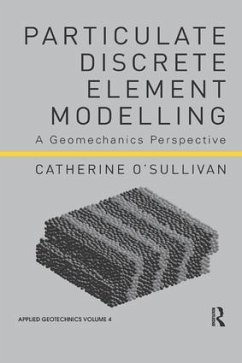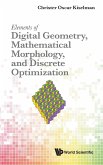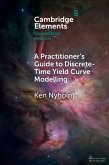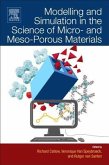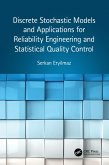Particulate discrete element analysis is becoming increasingly popular for research in geomechanics as well as geology, chemical engineering, powder technology, petroleum engineering and in studying the physics of granular materials. With increased computing power, practising engineers are also becoming more interested in using this technology for analysis in industrial applications. This is the first single work on Discrete Element Modelling (DEM) providing the information to get started with this powerful numerical modelling approach.
Written by an independent author with experience both in developing DEM codes and using commercial codes, this book provides the basic details of the numerical method and the approaches used to interpret the results of DEM simulations. Providing a basic overview of the numerical method, Particulate Discrete Element Modelling discusses issues related to time integration and numerical stability, particle types, contact modelling and boundary conditions. It summarizes approaches to interpret DEM data so that users can maximize their insight into the material response using DEM. The aim of this book is to provide both users and prospective users of DEM with a concise reference book that includes tips to optimize their usage.
Particulate Discrete Element Modelling is suitable both for first time DEM analysts as well as more experienced users. It will be of use to professionals, researchers and higher level students, as it presents a theoretical overview of DEM as well as practical guidance on running DEM simulations and interpreting DEM simulation data.
Written by an independent author with experience both in developing DEM codes and using commercial codes, this book provides the basic details of the numerical method and the approaches used to interpret the results of DEM simulations. Providing a basic overview of the numerical method, Particulate Discrete Element Modelling discusses issues related to time integration and numerical stability, particle types, contact modelling and boundary conditions. It summarizes approaches to interpret DEM data so that users can maximize their insight into the material response using DEM. The aim of this book is to provide both users and prospective users of DEM with a concise reference book that includes tips to optimize their usage.
Particulate Discrete Element Modelling is suitable both for first time DEM analysts as well as more experienced users. It will be of use to professionals, researchers and higher level students, as it presents a theoretical overview of DEM as well as practical guidance on running DEM simulations and interpreting DEM simulation data.
"This book is unique in the market, not only because it is the only introductory text of DEM written with so much practical advice for users, but also because of its unique attention to the audience in the area of geomechanics. ... An excellent reference textbook for a graduate course on DEM; it is also an excellent self-study reference for an individual graduate student or engineer who plans to carry out DEM."
-- Helen Cheng, Géotechnique
"This volume on the theory and application of the particulate discrete element modeling approach is the first of its kind in the geomechanics community, and it represents a valuable and highly useable reference for a range of readers interested in numerical mechanical modeling."
--Amanda N. Hughes, Pure and Applied Geophysics
"This volume on the theory and application of the particulate discrete element modeling approach is the first of its kind in the geomechanics community, and it represents a valuable and highly useable reference for a range of readers interested in numerical mechanical modeling."
--PAGEOPH, 2014
-- Helen Cheng, Géotechnique
"This volume on the theory and application of the particulate discrete element modeling approach is the first of its kind in the geomechanics community, and it represents a valuable and highly useable reference for a range of readers interested in numerical mechanical modeling."
--Amanda N. Hughes, Pure and Applied Geophysics
"This volume on the theory and application of the particulate discrete element modeling approach is the first of its kind in the geomechanics community, and it represents a valuable and highly useable reference for a range of readers interested in numerical mechanical modeling."
--PAGEOPH, 2014

